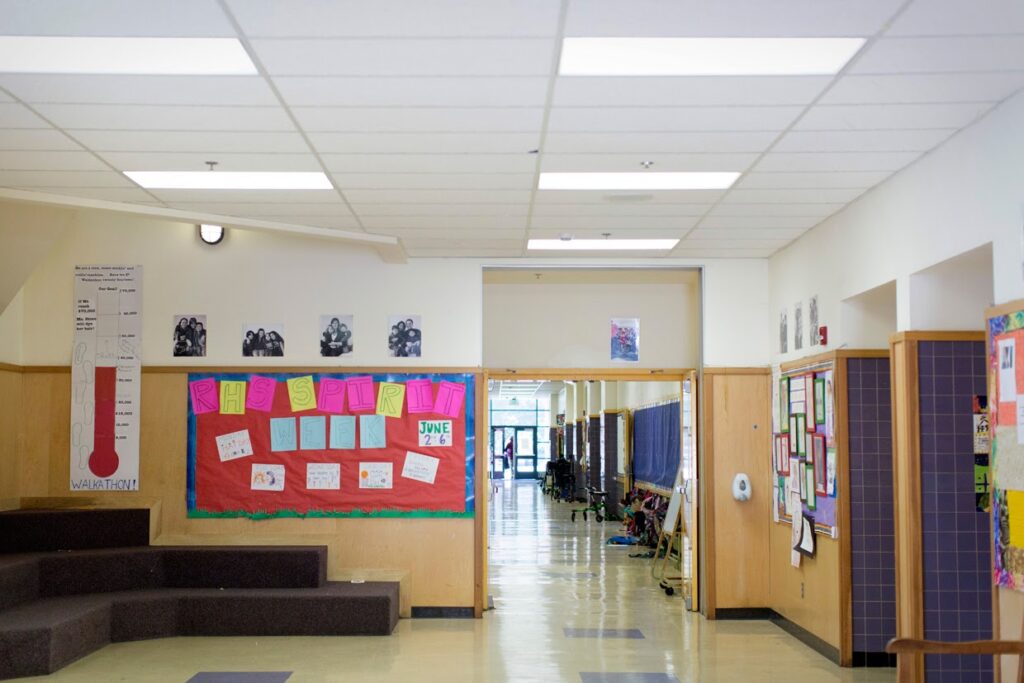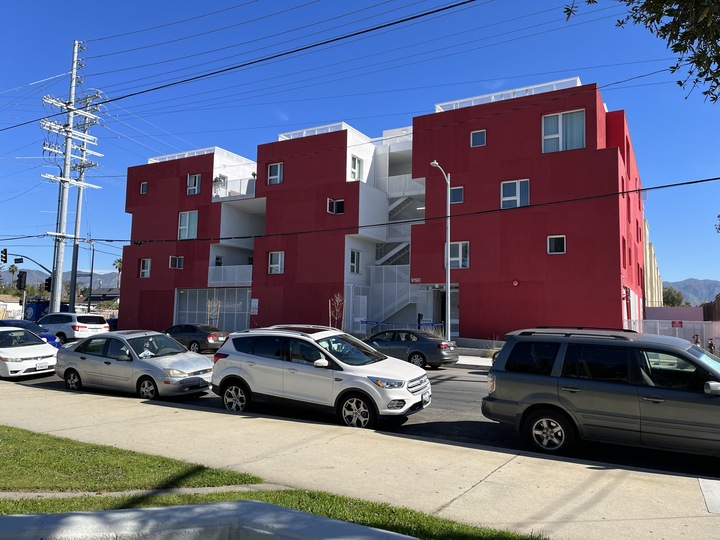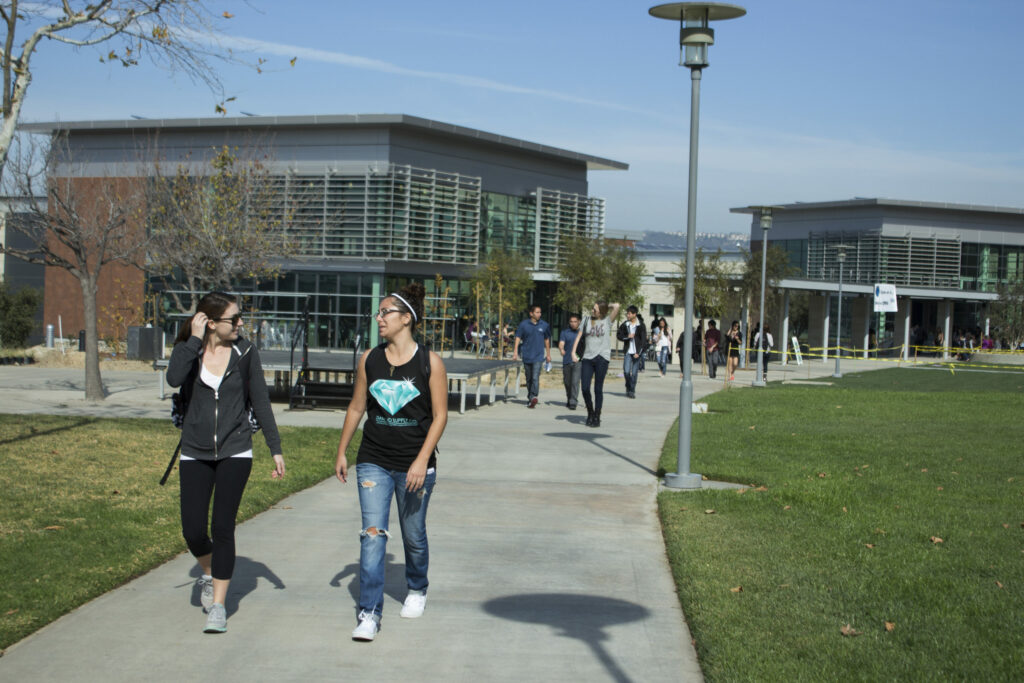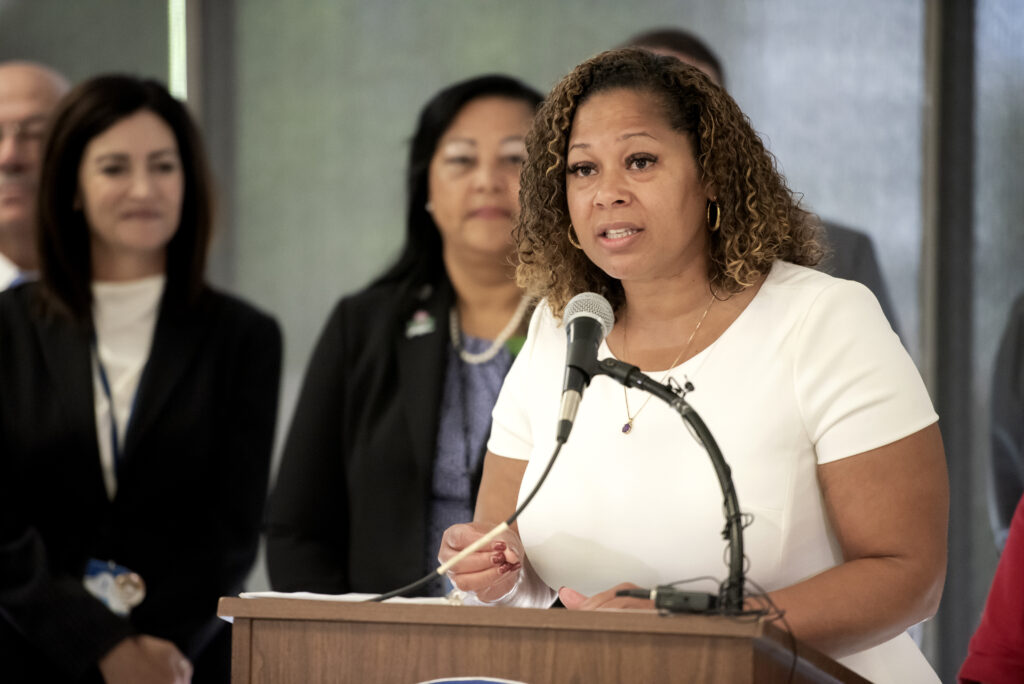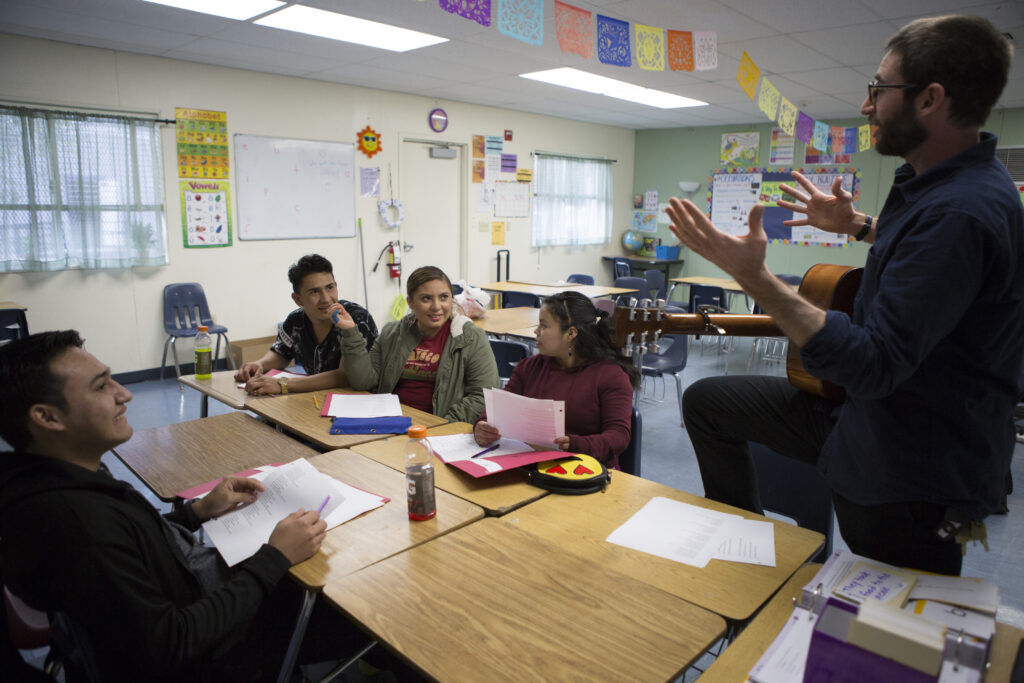
Credit: Alison Yin / EdSource
Advocates are calling for $13 million in dedicated state funding and for the adoption of a bill that would support homeless students and youth exiting foster care as schools face the expiration of significant pandemic-era federal funding this year.
The call comes from the Oakland-based National Center for Youth Law, which is also co-sponsoring Assembly Bill 2137.
The bill, introduced by Assemblymember Sharon Quirk-Silva, proposes making it easier for local organizations that serve foster youth to provide direct services. It also mandates those same programs be informed when foster students opt out of applying for federal financial aid, and it requires districts to detail how they plan to increase identification of students experiencing homelessness.
Youth exiting the foster care system face a disproportionate risk of homelessness, and some state programs dedicated to offering them housing support would be eliminated if the state’s proposed budget is approved as it currently stands.
“If we do not have the basic infrastructure in the state to identify them and do any preventative work, we are going to continue to fail this population and then see chronic adult homelessness grow, which is the issue everyone says they care about,” said Margaret Olmos, director of the National Center for Youth Law’s compassionate education systems team in California.
The proposed funding allocation would partially replace the federal money — which must be obligated before October and spent by January next year — while the bill seeks to implement three provisions, directing existing resources toward supporting foster and homeless youth while working to increase their high school graduation and college enrollment rates.
The bill “really highlights the need that we have to do all we can … to be very intentional about our foster youth and outcomes of them maybe having a pathway straight into homelessness unless we intervene,” said Quirk-Silva. “This is a way to work with them through the education system.”
The call for state funding specific to homeless youth, which school staff and advocates have long campaigned for, and for the adoption of the bill, come in a year that California faces a budget deficit in the billions and as rates of student homelessness in many counties have surpassed pre-pandemic rates.
“We’re not deaf to the environment. … What we know is when there is a budget deficit that the number of families and children experiencing homelessness is just going to go up,” Olmos said.
Advocates see both the call for $13 million in dedicated state funding and the adoption of Assembly Bill 2137 as necessary steps in preventing the rise of youth homelessness.
State data and recent studies show that students experiencing homelessness and those in the foster care system are significantly more likely to be chronically absent from school, be suspended, have lower grades, experience higher school instability, or drop out of school.
Dedicated state funding
In 2021, California received nearly $100 million to aid in the identification, enrollment and school engagement of youth experiencing homelessness. This was one-time federal pandemic-era funding under the American Rescue Plan.
Since then, school staff have hailed the funding as critical in their efforts to stay current on which of their students were homeless and how to best support them, whether by offering their families short-term stays in motels after an eviction, hiring staff to contact families they believe might be experiencing homelessness, distributing debit cards for gas, and more.
Students identified as homeless in California are eligible to receive some resources, but the state does not dedicate funding that is specific to this population of students. Some states, such as Washington, have allocated state dollars toward replacing the American Rescue Plan funds before they sunset.
While the state’s funding formula for education gives some funds for high-needs students, including those identified as homeless, it’s not proportionate to the number of homeless students living across the state. In practice, homeless students account for less than 1% of planned spending in the funding formula, according to a report published last year by the Public Policy Institute of California.
Additionally, this state funding is tied to first identifying students who are homeless — an effort that school staff say in and of itself needs to first be funded.
“This is the one subgroup that has to self-identify,” said Olmos. “None of this works if you do not have somebody who is there to count and care about that population.”
There is some dedicated funding at the federal level, such as the McKinney-Vento Homeless Assistance Act, but those grants are distributed in California as part of a competitive grant process, making them extremely limited. During the 2018-19 school year, for example, just 73 of California’s nearly 2,300 local education agencies were awarded McKinney-Vento funding; only 103 applied for the grants, according to a state audit.
McKinney-Vento grants to California totaled about $13 million annually prior to the pandemic, and the call for $13 million in state funding would match that amount.
That amount would not have the same statewide impact that schools felt with the American Rescue Plan funds, but Olmos said that “it’s at least, for the first time, a commitment” from the state.
Proposal to refine current resources
Quirk-Silva, the legislator who introduced Assembly Bill 2137, hopes the bill will help prevent youth homelessness by supporting current foster youth in schools. She was an elementary school teacher for 30 years before being elected to represent District 67, which includes cities from Cerritos in Los Angeles County to Fullerton in Orange County.
“We know they’re part of the population (of homeless youth), and we have to do everything we can before they leave their placements,” said Quirk-Silva. “Some do go to college, and that does help them, but many of them aren’t on that track, and that’s where they become even more vulnerable.”
In refining existing resources, the bill seeks to implement three provisions with the goal of keeping foster youth engaged in school by addressing their individual needs.
The first of the bill’s provisions would increase flexibility for county Foster Youth Services Coordinating Programs, which coordinate with local educational agencies to provide resources such as tutoring and FAFSA support for foster youth students, when offering direct support services to students.
Currently, the county programs, known as FYSCPs, can only offer such services after receiving written certification from the local educational agency confirming they are “unable, using any other state, federal, local, or private funds, to provide the direct services.”
This requirement, according to the bill co-sponsors, which also includes advocacy organization John Burton Advocates for Youth, is a barrier because many local educational agencies, or LEAs, “are reluctant to provide written certification that they cannot address the needs of foster youth resulting in FYSCPs having to forgo providing these services, even when clearly indicated and when funding is available to do so.”
The second provision would request that the coordinating programs be informed if students fill out a form opting out of applying for federal financial aid, so they may intervene and advise foster youth about their options post-high school.
The third and final provision in the bill would require districts to detail in their three-year strategic plans how they plan to increase identification of students experiencing homelessness.
Assemblymember Quirk-Silva said she expects her colleagues to support the bill. There are currently no estimates for how much the bill would cost, if adopted.
“What I’ve seen as a classroom teacher is this is a very vulnerable population,” she said. “Often they need the most support and many times they get the least amount of support.”
